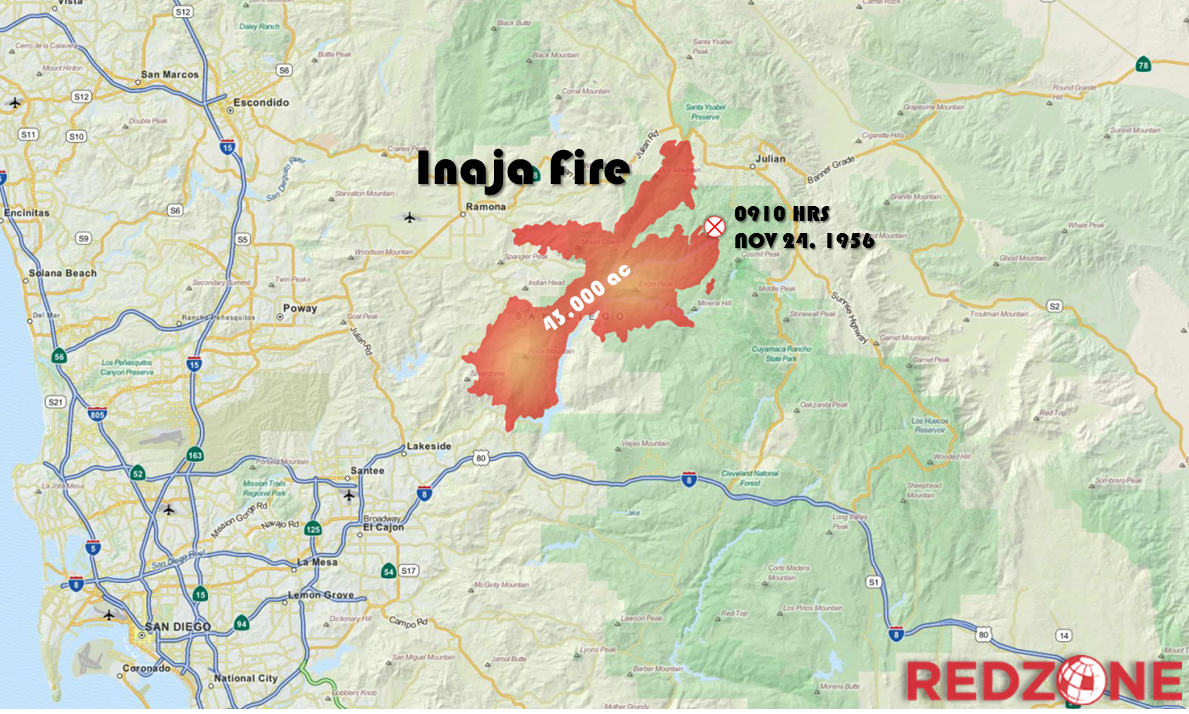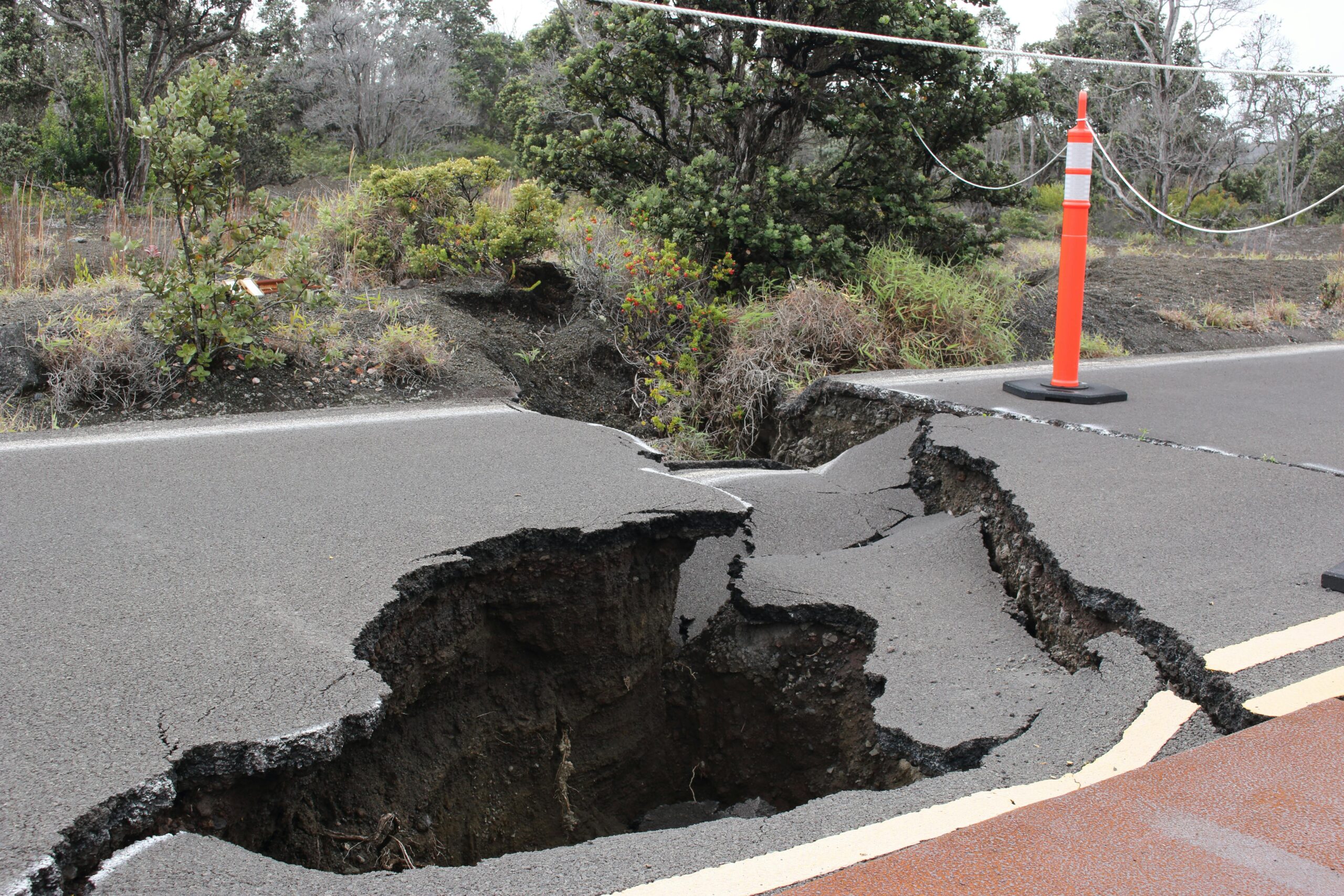On November 24th, 1956, a wildfire began on the Inaja Reservation near Julian in East County, San Diego that would kill eleven firefighters and change the landscape of wildland firefighting.
On the night of November 25th, firefighters were attempting to cut a control line around the fire in San Diego Canyon. They were quickly forced to retreat up an 1,100 foot ascent however, as the fire engulfed the upper canyon area above them in a mere twenty minutes, according to the official report of the fire. Eleven firefighters were trapped just below a small bluff near the top of the canyon when a “flashover” lit 40 acres of wildland all around them, effectively cutting off all safe paths of exit. A flashover occurs when all surfaces and objects within a space have been heated to their ignition temperature, and flame breaks out almost at once over the given area.

Inaja Fire Map, Cleveland National Forest, November 1956.
Following this unfortunate tragedy and other fatal situations going back several years, changes were made in training and tools as well as standard operation procedures during what are termed “mass fires”. Calls came for more sophisticated fire behavior training and in-depth fire behavior research for fires in difficult topography. Policies were implemented to require experts on scene to assist in decision-making, and incentives were provided to enable wildland crews to recruit and retain the competent individuals required to perform this difficult job.
![]()



